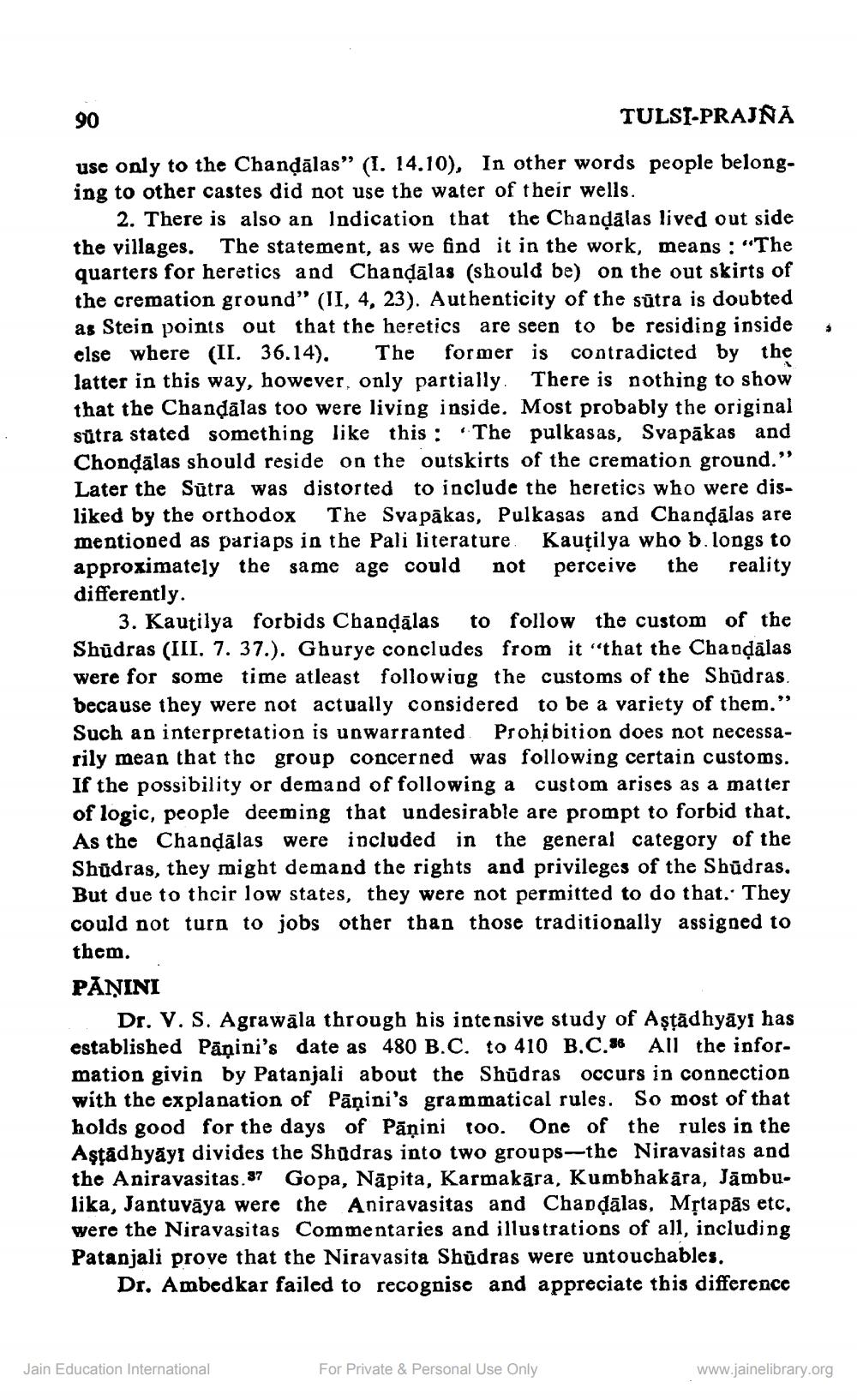________________
90
TULSI-PRAJNA
use only to the Chandalas" (I. 14.10), In other words people belonging to other castes did not use the water of their wells.
2. There is also an Indication that the Chanḍālas lived out side the villages. The statement, as we find it in the work, means: "The quarters for heretics and Chandalas (should be) on the out skirts of the cremation ground" (II, 4, 23). Authenticity of the sutra is doubted as Stein points out that the heretics are seen to be residing inside else where (II. 36.14). The former is contradicted by the latter in this way, however, only partially. There is nothing to show that the Chanḍālas too were living inside. Most probably the original sütra stated something like this: The pulkasas, Svapākas and Chondalas should reside on the outskirts of the cremation ground." Later the Sūtra was distorted to include the heretics who were disliked by the orthodox The Svapakas, Pulkasas and Chandalas are mentioned as pariaps in the Pali literature Kautilya who b. longs to approximately the same age could not perceive the reality differently.
3. Kautilya forbids Chanḍālas to follow the custom of the Shūdras (III. 7. 37.). Ghurye concludes from it "that the Chanḍālas were for some time atleast following the customs of the Shūdras. because they were not actually considered to be a variety of them." Such an interpretation is unwarranted Prohibition does not necessarily mean that the group concerned was following certain customs. If the possibility or demand of following a custom arises as a matter of logic, people deeming that undesirable are prompt to forbid that. As the Chanḍālas were included in the general category of the Shudras, they might demand the rights and privileges of the Shudras. But due to their low states, they were not permitted to do that. They could not turn to jobs other than those traditionally assigned to them.
PĀŅINI
Dr. V. S. Agrawala through his intensive study of Aṣṭadhyāyi has established Pāņini's date as 480 B.C. to 410 B.C. All the information givin by Patanjali about the Shūdras occurs in connection with the explanation of Panini's grammatical rules. So most of that holds good for the days of Pāṇini too. One of the rules in the Aşṭadhyayı divides the Shudras into two groups-the Niravasitas and the Aniravasitas.37 Gopa, Nāpita, Karmakāra, Kumbhakāra, Jāmbulika, Jantuvāya were the Aniravasitas and Chanḍālas, Mṛtapās etc. were the Niravasitas Commentaries and illustrations of all, including Patanjali prove that the Niravasita Shüdras were untouchables.
Dr. Ambedkar failed to recognise and appreciate this difference
Jain Education International
For Private & Personal Use Only
5
www.jainelibrary.org




